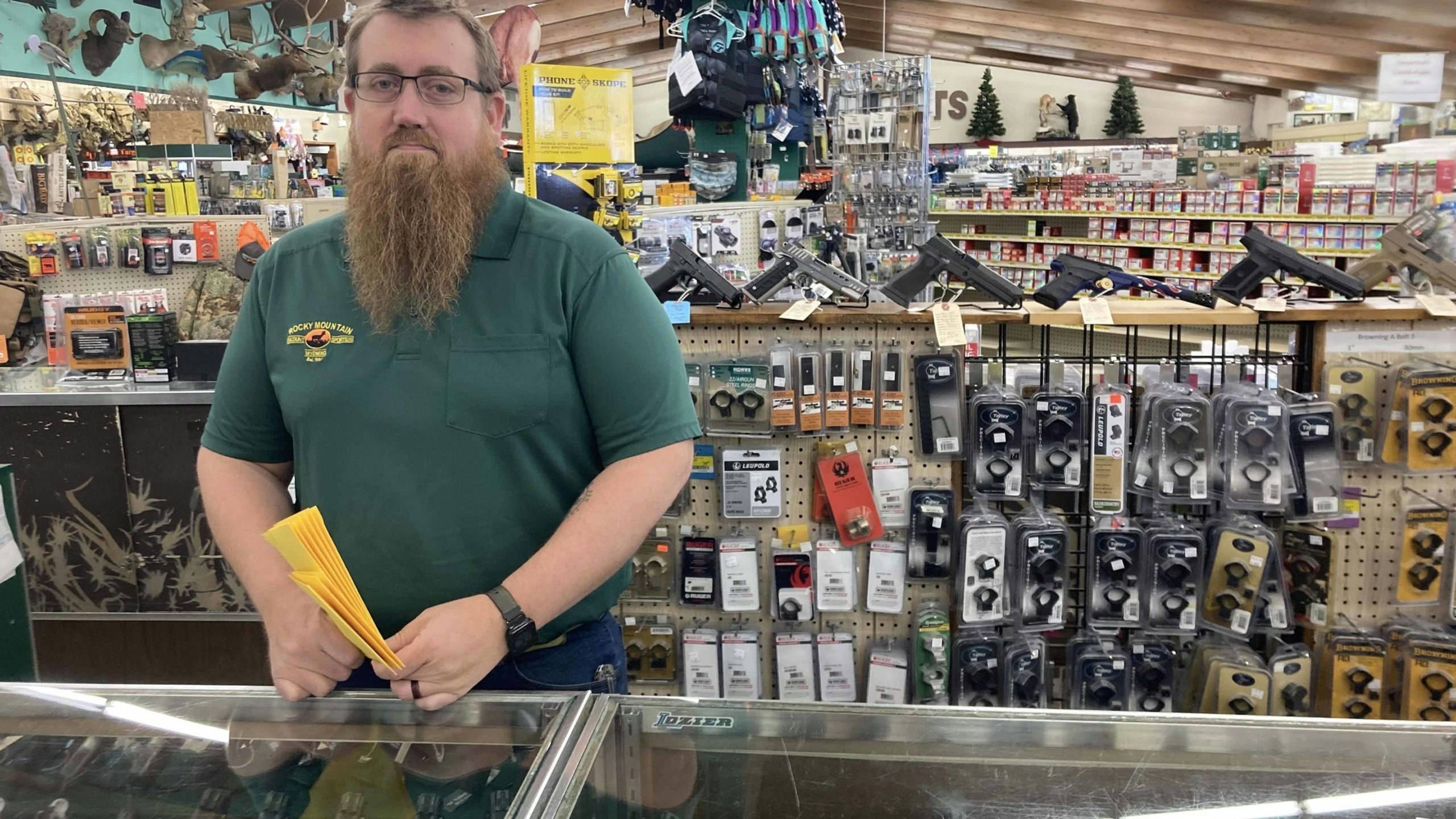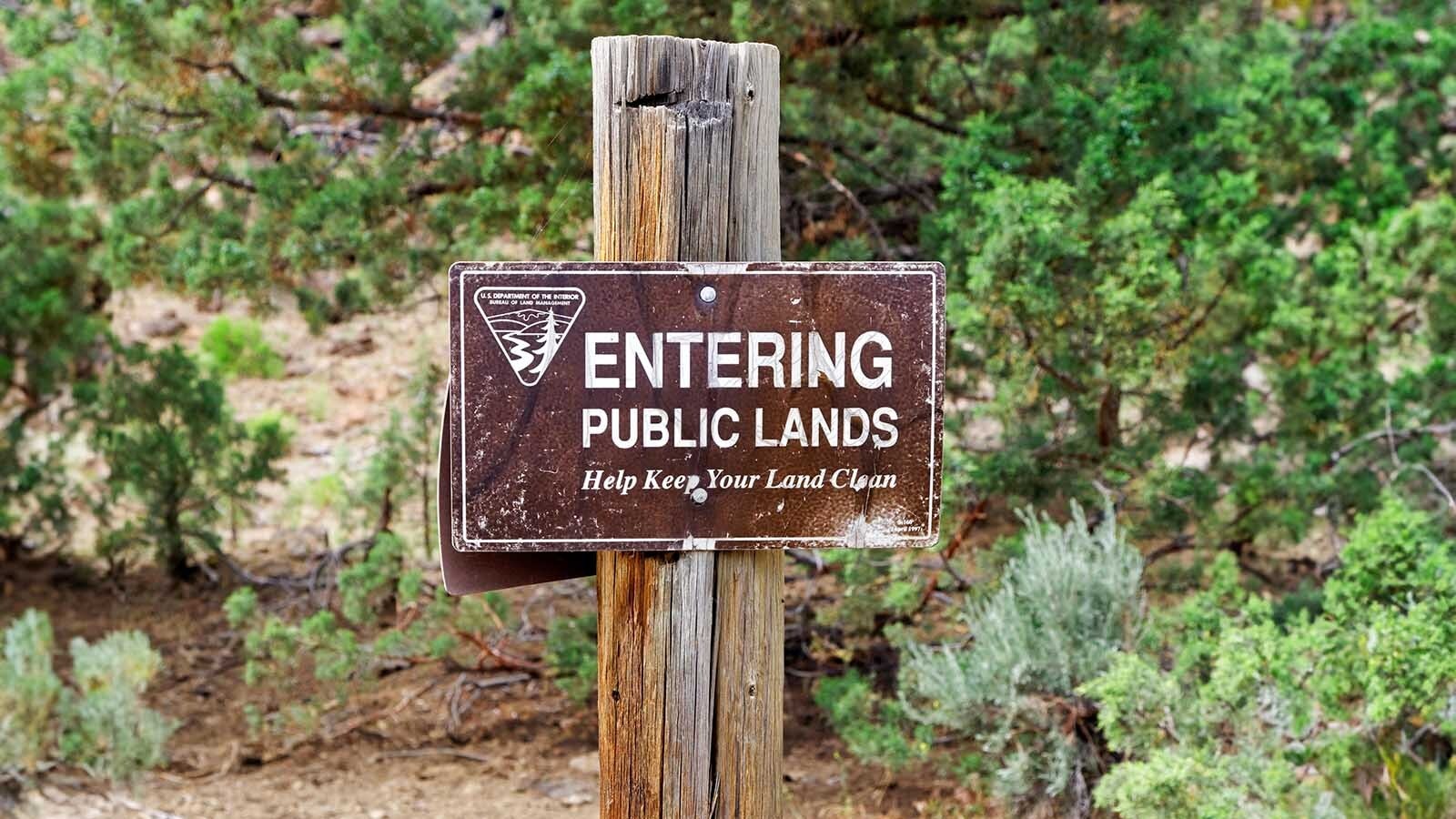Inflation, ammunition shortages, and cultural stability are driving gun sales in Wyoming back down to pre-pandemic levels, according to gun dealers.
Gun sales in Wyoming and the nation hit all-time highs in the spring and summer of 2020, as lockdowns and inner-city riots drove many first-time buyers to purchase guns. Rising demand and scarcity drove traditional gun-owners to stockpile both guns and ammunition as well, according to news reports at the time.
Background checks for gun purchases in Wyoming leapt from about 6,000 per month in early 2020 to about 9,000 per month that spring – a trend that continued through much of 2021 except for a summer lull, according to the National Instant Criminal Background Check System.
But there were just 4,827 background checks for gun sales in Wyoming in January 2022. The figure climbed to 6,972 in March and dropped to 5,845 in April.
Whatever the reason, it’s only natural for a market boom to end, said Richard Biby, manager of Rocky Mountain Sports in Riverton.
“More people bought guns (nationally) in 2020 than almost all other years that have been tracked combined,” said Biby. “There’s no way to recreate those numbers. That was an absolute one in a million.” One reason gun sales may have gone back to normal at this time, he said, is that “everything’s kind of gone back to normal.”
Biby noted specifically that the inner-city riots of 2020 have ceased.
‘So Behind On Ammo’
Some buyers who would like to purchase a specific type of firearm have been stymied by ammunition shortages, Biby added.
Ammo shelves in Wyoming went bare in 2020 due, dealers said, to skyrocketing demands. Manufacturers are just now catching up – slowly.
Biby said .22-caliber long-rifle, 9 mm and .223 rounds are “relatively caught up” in his store because the prior manager ordered them two years ago.
The years-long delay wasn’t typical for the industry before 2020.
“That’s a new-world thing,” said Biby.
Down the road from Biby at High Country Sporting Goods, owner Dennis Mazet said the supply is “still terrible.”
“If you buy a gun there’s a 10% chance you’re going to find the ammo for it,” said Mazet. “(Manufacturers) got so behind on ammo, I don’t know how in the hell they’re ever going to catch up.”
In Powell, the owner of a small gun shop has struggled against the ammo shortage long enough to quit stocking it – for now.
“The availability has been so dodgy,” said Aaron Black, of Northwest Trading Post. “You can get some stuff, but it’s hard to have a consistent supply.”
Black said he’s “held off” restocking until there’s more reliability.
Black noted that larger shops that go straight to the supplier instead of using a wholesaler may have more success keeping the product on their shelves.
But he was also optimistic about the future ammo supply, noting that the manufacturer Remington rebooted operations in 2021 following its 2018 bankruptcy, which Black said may have been due to a failure to budget for leaner times.
The Obama administration’s policies on firearms led to heightened sales; the Trump administration saw a drop in gun sales. Small gun shops and large manufacturers alike should prepare for such industry ups and downs, said Black.
“You try to prepare for it a little: make sure you have enough capital on hand to get through a dry spell,” Black said. “But you can’t prepare for a three-year dry spell.”
No Money For Toys
Inflation is another culprit driving gun sales down, said Mazet.
“When you’re paying five bucks a gallon for gas, you don’t have a lot of extra money to buy toys with it,” he said.
Inflation hit the gun and ammunition market long before grocery and gasoline costs shot up early this year, said all three firearms dealers, noting that industry prices climbed during the extreme scarcity of 2020 and 2021.
Biby said manufacturers started charging more for some products in 2020, and although it’s not consistent, certain weapons are still going up in price – even as gun sales drop.





